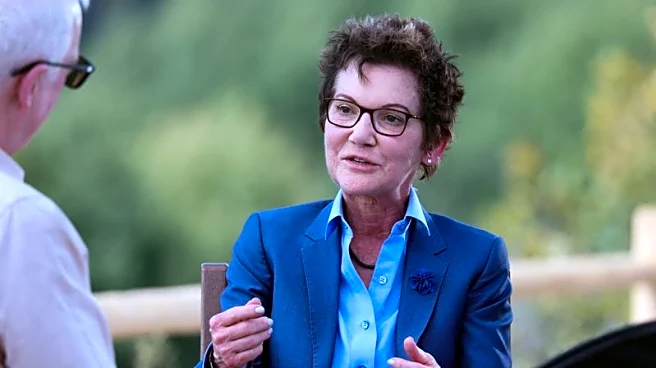What's Happening?
Federal Reserve Governor Stephen Miran has expressed support for further interest rate cuts to prevent potential economic softening. In a recent interview, Miran suggested that the Federal Reserve should
consider a 50 basis point reduction, although he acknowledged that a quarter-point easing would be a minimum. Despite Miran's advocacy, the Federal Open Market Committee (FOMC) opted for quarter-point cuts in September and October, with Miran voting against these decisions. The FOMC's hesitancy is partly due to inflation rates remaining above the Fed's 2% target, and concerns about labor market deterioration. Miran emphasized the need for proactive policy-making based on future economic forecasts rather than current data.
Why It's Important?
The discussion around interest rate cuts is significant as it impacts the broader U.S. economy, influencing borrowing costs for businesses and consumers. Lower interest rates can stimulate economic activity by making loans cheaper, potentially boosting investment and spending. However, there is a risk that aggressive rate cuts could lead to inflationary pressures if not managed carefully. The Federal Reserve's decisions are closely watched by investors and policymakers, as they can affect market stability and economic growth. Miran's push for larger cuts highlights the ongoing debate within the Fed about the best approach to support the economy amid mixed economic signals.
What's Next?
The Federal Reserve is expected to continue evaluating economic data to determine the appropriate course of action for interest rates. The upcoming FOMC meeting in December will be crucial, as policymakers will decide whether to implement further cuts. Market participants are pricing in a 63% chance of a rate reduction, indicating uncertainty about the Fed's next move. The decision will likely depend on new economic data, particularly regarding inflation and labor market conditions. Stakeholders, including businesses and investors, will be closely monitoring these developments to adjust their strategies accordingly.
Beyond the Headlines
The debate over interest rate cuts also touches on broader economic policy issues, such as the balance between stimulating growth and controlling inflation. The Fed's approach to rate cuts reflects its dual mandate to promote maximum employment and stable prices. The internal disagreements among Fed officials underscore the complexity of economic forecasting and the challenges of making policy decisions in uncertain times. Additionally, the lack of official economic data due to the government shutdown has complicated the Fed's decision-making process, highlighting the interconnectedness of fiscal and monetary policy.












